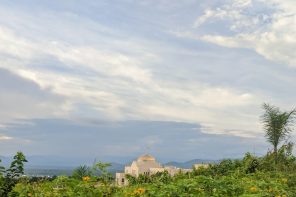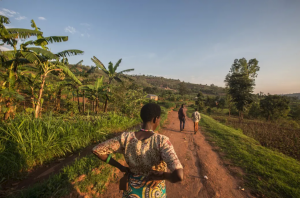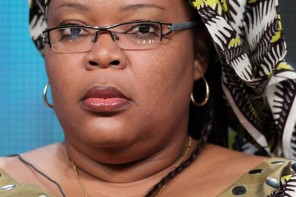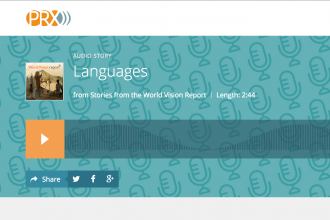If you live in America, go to your nearest newsstand and buy the March issue of Mother Jones.
You’ll probably like most of what’s in the “special report on human rights,” but Adam Hochschild’s article on the DRC — “Blood and Treasure: Why one of the world’s richest countries is also one of the poorest” — stands out in the magazine. Hell, it stands out next to most American journalism on Africa. (You should also buy the magazine because Marcus Bleasdale‘s photos are mind-blowing, and you’ll want to know about his book coming out.)
Hochschild’s is the first big story I’ve seen about minerals in Congo not to be all gimmicky (sorry, 60 Minutes, and by the way, do better next time). He doesn’t follow around a well-coiffed white ambassador-to-horror, nor does he talk about your cell phone or lap top in a doomsday tone. In fact, he points out, in a luscious little sidebar, that a boycott of DRC minerals won’t do much but take wages away from already impoverished and underpaid artisanal miners. (It’s worth noting that the people working on some kind of mineral-certification process are concerned about that too and trying to plan around it. It’s also worth noting that mineral-certifying, a la the Kimberley process, is a bit of a mixed bag. But that’s another issue.)
Hochschild’s article is so damn good in part because it isn’t ahistorical. The author of “King Leopold’s Ghost” starts with what he knows best, the country’s history of colonial exploitation. He follows that path straight up to today. “Of the women I see now in long, brightly colored dresses eking out a living selling bananas spread on a piece of cloth at the roadside, how many, I wonder, are the granddaughters or great-granddaughters of those who were marched to the mines in chains?”
He literally follows the relics, showing us old abandoned mining towns — there’s a detail nothing short of absurd, about an Olympic-sized swimming pool near Ituri, rusting metal diving board and ladder still in tact — and introducing us to the people you meet in a miner’s Congo: police who want bribes to pass on the road, the young shopkeeper weighing metal middlemen’s wears, the prospectors (and, in a passing reference, the American man who stands to make a fortune on new gold pits). Here’s one scene:
It’s only about 10 in the morning, but the tropical sun is already broiling. Farther down the trail we
stop to talk to a young miner with a gentle smile and intelligent eyes, walking back uphill to [the town of] Pili-Pili. His name is Alex, and he is 22. He says he had to drop out of high school two years ago for lack of money, and has been mining ever since. “There is no work in Congo. We suffer a lot.”He and the friend who is with him, he explains, are cascadeurs—a word that normally,
as French film buffs know, means movie stuntman, but here it means someone working odd corners, who does not belong to one of the teams. Alex shows us a small plastic bag of sand, with tiny flecks of gold
in it, which, he estimates, the two of them can sell in Pili-Pili for the equivalent of $1. That’s their usual take for an entire day, and they are delighted to have found this much so early. They bid us a warm goodbye and
continue up the trail.”
Here’s some analysis:
“A failed state fails its people in many ways, and one of them is that, in a world of powerful corporate players, a weak and corrupt government has no bargaining power.”
And here’s the brilliant conflict nut graf, that thing that so many journalists get wrong — sensationalize, one-dimensionalize, or otherwise miss the boat in the oft-dsicsused “rape + lions” kind of way — and that Hochschild makes look so deceptively simple:
Since Mobutu’s overthrow and death in 1997, Congo has been in the grips of a fiendishly complex and brutal war whose exact toll no one knows. It may well be in the millions if you count those who died because fleeing their homes or living in packed, disease-ridden refugee camps cut them off from adequate food and medical care. Women and girls by at least the tens of thousands have been gang-raped by government soldiers and rebel militias, who have found this a chillingly effective method of terrorizing the civilian population of areas they occupy.
That’s probably the limits of fair use at this point, and the article isn’t online yet.
One thing I always appreciate about his writing, and that these three excerpts illustrate yet again, is the humility in both his observation and analysis. You’re not gonna see Hochschild pulling that Gettleman stuff. He listens, pays attention, and knows it’s always more complicated than it seems. And he manages, so deftly and in so few words, to write so much. This is an article about far more than just “conflict minerals,” and yet it tells that story better than most journalists have thus far, too.
Buy the magazine. And then send a note to the editors that says you want to see more of this kind of writing (and photography!). (They seem to register tweets to @motherjones as well.)




